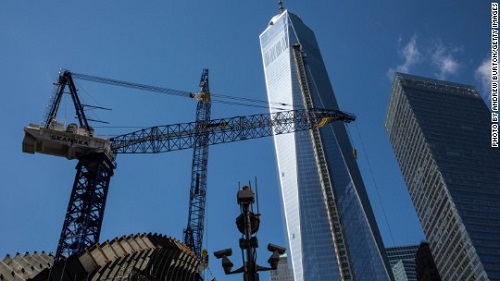The road back from the recession that struck in 2007
has been messy: sluggish growth, slumping productivity, stubbornly high measures of unemployment. But there’s an aspect of this recovery that may be redemptive: It’s been unusually long.
The arrival of March means the current economic expansion has now entered its 93rd month, surpassing the 92-month expansion of the 1980s, to become the third-longest in U.S. history.
The financial crisis was such a severe earthquake that crippling aftershocks seemed inevitable. No such rumble has occurred. Is it because low growth lasts longer? Or is it a sign that something more fundamental changed about the U.S. economy in recent decades?
To rank expansions, we turn to the chronology of the National Bureau of Economic Research, the arbiter of when U.S. recessions begin and end. In records dating back to before the Civil War, the U.S. has only twice had longer spells of growth: the 1960s and 1990s.
Some quick background: the NBER’s definition of recession is not intuitive to everyone. The NBER looks for turning points, where the economy stops shrinking or when unemployment stops rising. Even after that turning point, unemployment can remain high for years.
Imagine if unemployment soared to 25%, and then began to fall a few percentage points a year. The NBER would declare the recession over once that rate was falling, even though the level of joblessness would remain very high for years. This is the time-honored definition that defines recessions back to 1854. And it is by this more-than-150-year-old yardstick that the current expansion has lasted an unusually long time.
A detailed explanation of why NBER picked June 2009 as the start of the expansion is available here. Their case for the date is not widely disputed. The stock market usually turns before the economy and has been in a similarly enduring bull market since March 2009.
This is a remarkably long time ago. Throughout U.S. history, the gap between one recession’s end and the next one’s beginning has averaged just under five years. If this economy makes it to next summer, it will be the second-longest in U.S. history. By mid-2019 it would become the longest on record. The bull market in stocks is already the second longest in history.
Is the expansion’s length redemptive? It’s certainly better than having a renewed collapse. But this was an unusually severe recession (the longest since the Great Depression, and by many measures the most severe since then too) and slow recovery left many people in dire straits for far too long, leading to significant economic scarring. Some economists believe that one reason for this expansion’s length may well be this weakness. Booming economies build up excesses; it’s hard for a tepid economy to reach the point where there’s as much to lose.





